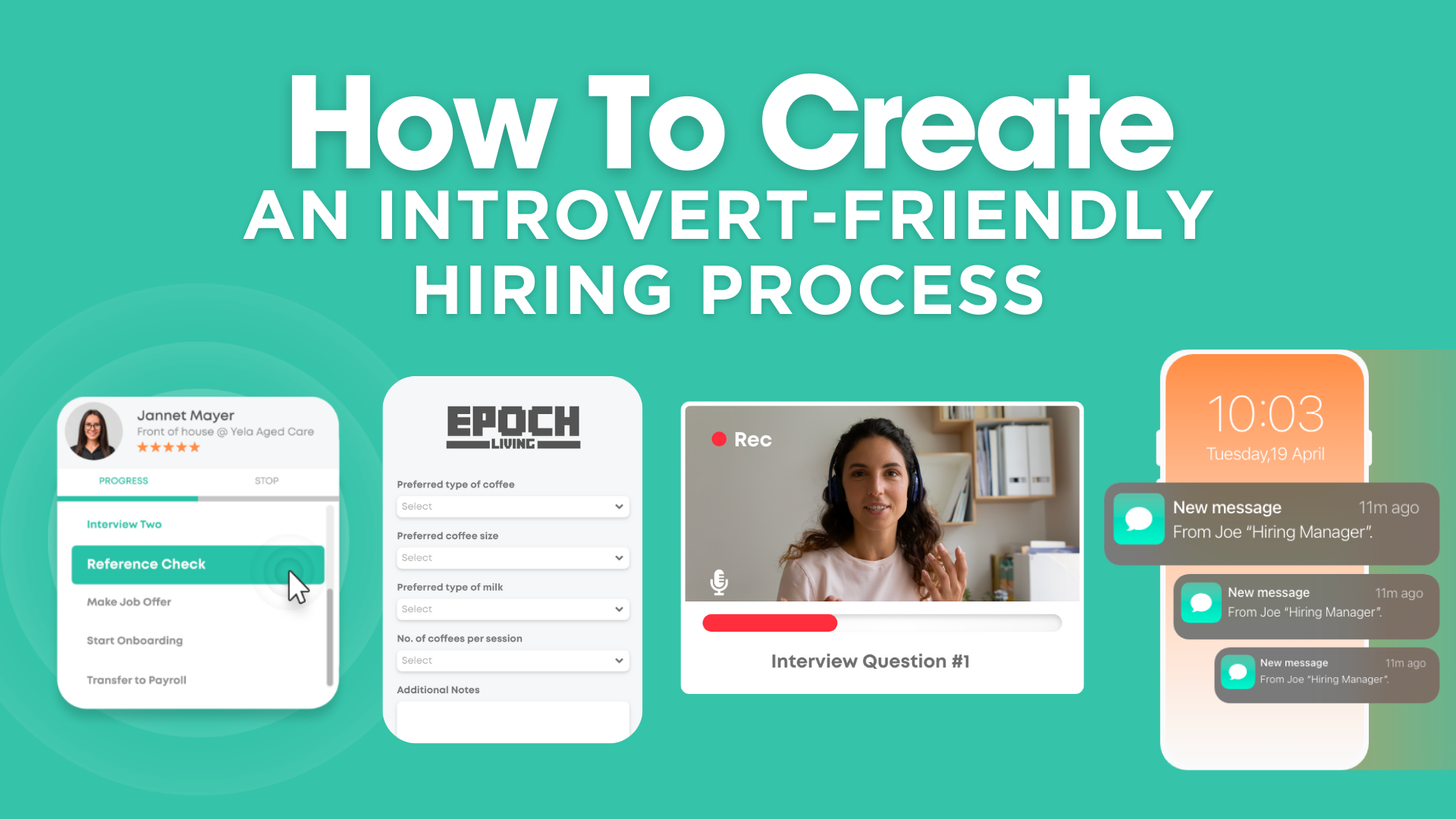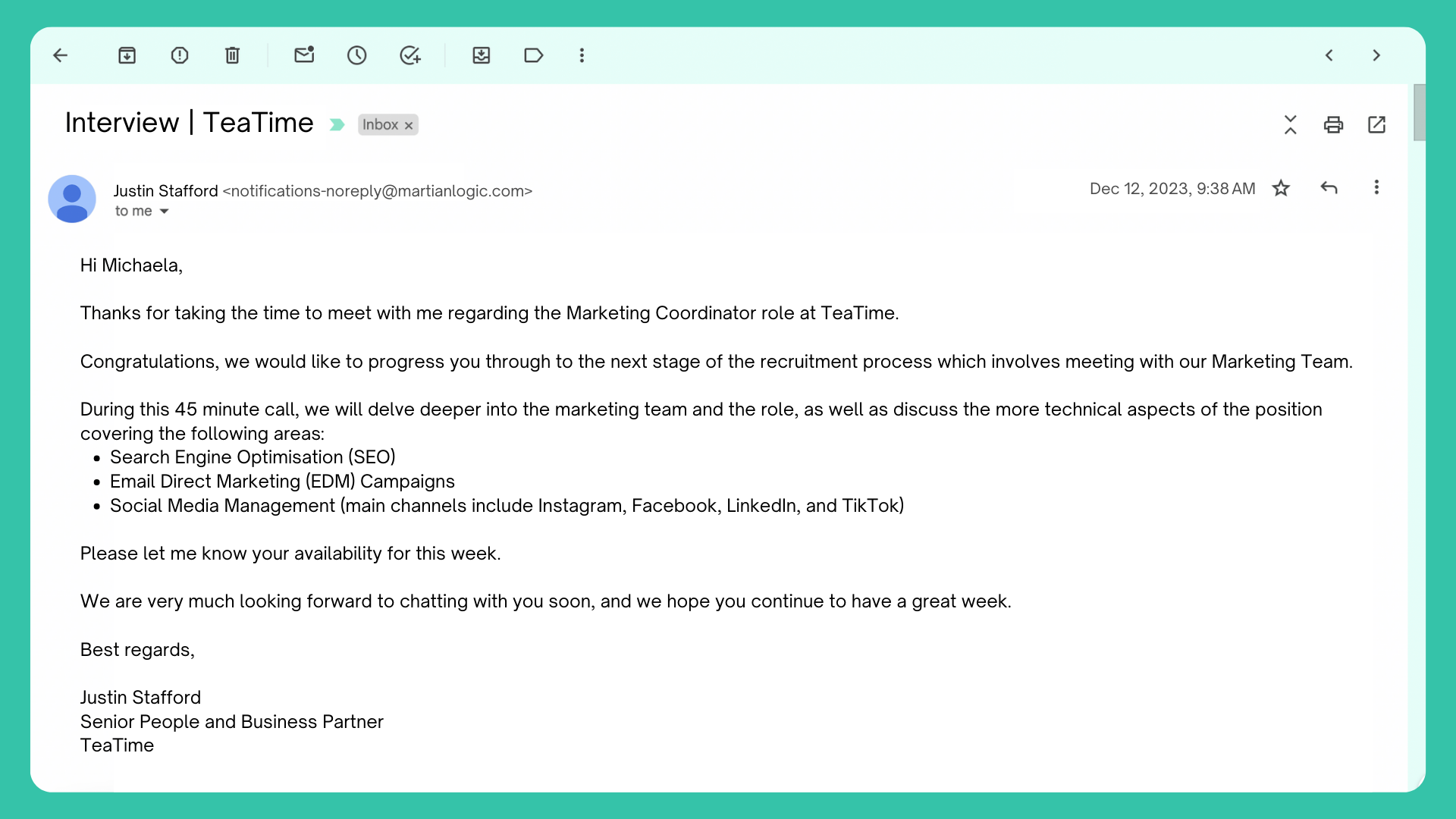As an introvert myself, I understand that the process of applying and interviewing for jobs can be difficult – sometimes even daunting. And even with lots of preparation, it’s tough for us introverts to boast about accomplishments and be quick to answer questions on the spot. But that doesn’t mean we don’t have a lot to contribute!
By tweaking the hiring process to be more inclusive for introverted candidates, you can make sure they shine right alongside their extroverted counterparts. Believe me, making a few adjustments is all it takes, and today, we’re here to spill the beans on what those moves are.
What Is An Introvert?

If you think of an introvert, you might be picturing someone shy, quiet, and independent. And while that rings true for some, the world of introversion is far more than that. Distinguishing an introvert from an extrovert depends on how they navigate and process the world around them.
Here are some common characteristics of introverts in the workplace:
- Reflective & self-aware
- Take time to make decisions
- Feel comfortable being alone
- Prefer to write their thoughts down, rather than speak
- Being alone can bring inspiration & creativity
How To Create An Introvert-Friendly Hiring Process

1 – Always Use Reference Checks
Reference checks are an important step of any hiring process, however, they become even more crucial when bringing introverted talent on board. Let’s face it, introverts aren’t usually ones to toot their own horns. And, since they tend to downplay their accomplishments (even if they’ve earned some gold stars at previous workplaces), having a second, or even third opinion, is key.
Conducting these reference checks early in the hiring process lets peers and colleagues brag on behalf of an introvert, ensuring a level playing field against candidates who are more comfortable with self-promoting. So, not only does this give introverts a fair shot at a position, but it also helps hiring managers better predict how they’ll perform on the team.
2 – Let Candidates Express Themselves Through Writing
For many introverts, being able to articulate thoughts and personality through spoken conversation isn’t always their strong suit, but give them a keyboard to write it down in peace, and that’s where the magic happens. This means, if you want to learn the most about them as a candidate, the best way to do that is by letting them have the freedom to express themselves through written mediums such as application forms, rather than relying solely on candidate answers in Zoom or in-person interviews.
For example, if you pose the question “what accomplishments are you most proud of?” in a written context, you’ll likely receive a more accurate and detailed response, in comparison to asking them that same question in a video call.
This will allow introverts to express themselves authentically and showcase their skills in a way that feels right for them. So, by opening up application forms to collect information beyond years of experience or salary expectations, you are creating an opportunity for candidates to communicate more accurately and comfortably.
3 – Use ‘Pre-Recorded’ Video Responses, Not Just Interviews
Without the pressure of another person sitting behind the screen or in the same room, pre-recorded video responses (aka one-way interviews), give introverted candidates the opportunity to speak freely in their own time. It’s their chance to rehearse and re-do videos until they’re just right before hitting submit. Plus, it doubles as a nifty screening tool that helps hiring managers get to know applicants better, before advancing them to the interview stages.
4 – Avoid Similarity Bias
Let’s talk about a sneaky little thing called affinity bias, or as some know it, similarity bias. It’s a type of unconscious bias that we’ve all encountered, drawing us toward candidates who align with us in interests, background, and experience. In other words, it’s the tendency to let your ‘likability’ of someone overcompensate for the areas that they may be lacking in, even if you’re not aware you’re doing it – and this can potentially sway hiring decisions for better or for worse.
To reduce the chances of a subjective hiring decision and ensure success in your teams, you need to have a diverse panel of stakeholders involved. This way, you get a blend of perspectives when evaluating candidates, making sure similarity bias is diluted as much as possible. Not only will this hold hiring managers accountable for their judgments, but it’ll also add a touch of diversity to the decision-making process, ensuring you make the right call when bringing new talent on board.
That being said, there are many tools out there that can help make this process of diversifying opinions and reducing bias in recruitment a breeze. For example, you may choose to use a specialised recruitment software such as an Applicant Tracking System (ATS). With this tool that centralises the entire recruitment process, not only can multiple stakeholders gain visibility into candidate details and application forms, but they can also share their feedback and provide rankings directly within the platform. With more voices and opinions, you can make sure you’re picking the best fit for the team, free from those sneaky biases.
5 – Consider Giving Them The Interview Agenda Too
For introverts like me, speaking on the spot can be a bit tricky — not because we’re shy, but because we’re introspective and thrive when we have time alone to process our thoughts. So, in the realm of recruitment, sharing the interview agenda with introverted candidates provides them with that precious solo thinking time. Even just a few general bullet points sent via email a few hours before the meeting can make a significant impact.
For instance, let’s say during the second interview stage for a role, you intend to ask more technical questions about a candidate’s past experience and areas of strength. The best thing to do to ensure the best outcome for hiring is to send your candidate a note – whether that’s via email or text message – outlining the main objectives of the meeting. This can help ease their nerves a bit without giving away every single question that you intend to ask. Here’s an example of what that might look like:

Key Takeaways
So, there you have it – 5 ways to create an introvert-friendly hiring process. These will help you make sure you don’t overlook any qualified or well-suited candidates, as well as give introverts the opportunity to match up to their extroverted counterparts. Remember: there’s more than meets the eye for everything, and introverts are no exception!
Contributors: Kyra Jay, Eddie Murphy & Anwar Khalil

